As you begin to deck the halls this holiday season, you may find yourself reaching for a plant or two to help spruce up your space. Let’s look at some of the most common plants that pop up around the holiday season and whether they are safe decorating choices.
Remember, if you’re unsure about whether a plant might be toxic to the people or animals living in your home, you can always call the experts at the Maryland Poison Center (MPC) for more information.
Amaryllis
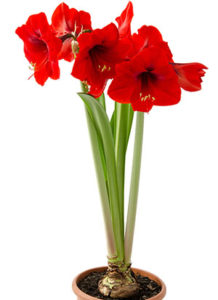
When I think of the holiday season, the amaryllis is one of the first flowers that comes to mind. Its colorful blooms make it a popular choice for holiday decorating. The rich red and popping white flowers will catch your eye among other holiday decorations. It also makes a great gift!
The bulb that sits in the dirt is the most toxic part of an amaryllis. Due to their size and shape, these bulbs can be easily mistaken for onions. A small bite or taste of the stalk or flowers won’t cause any harm. But, eating larger amounts of the plant can cause nausea, vomiting, and diarrhea.
Christmas Cactus
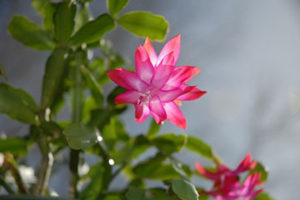
There are many types of holiday cacti that come in many colors, including red, white, orange, and pink. They bloom at different times of the year and are called by their season of blooming. Christmas cacti, which are commonly pinkish-red in color, bloom during the winter holiday season, hence the name. There are also Thanksgiving and Easter cacti available during their respective seasons.
Christmas cacti are non-toxic plants.
Christmas Tree

Using an evergreen tree as a Christmas tree began in Germany in the 16th century. The tradition was later brought to America in the 1800s. Trees were decorated with homemade items and lit with candles before there was electricity.
The needles of a live Christmas tree aren’t cause for concern, but can be irritating to the mouth and cause an upset stomach. Christmas tree water that contains a store-bought preservative solution can cause stomach upset if a large amount is swallowed. If you’re using a homemade tree preservative solution and someone swallows it, call the poison center and have the list of ingredients handy. Drinking plain Christmas tree water that has not been mixed with any solution can also cause nausea, vomiting, and diarrhea if large amounts are swallowed due to bacteria and pine residue from the tree.
Holly
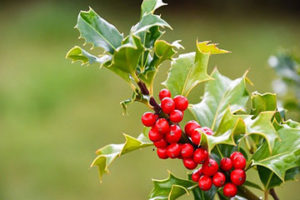
The cold winter weather isn’t a match for all plants, especially holly, which keeps its pointy green leaves and bright red berries throughout the winter season. Holly plants can be grown inside in a miniature variety, but larger holly bushes can be found outside too. There are male and female varieties, but only females have bright red berries.
Eating a few berries won’t cause any harm. But, eating larger amounts of berries can cause nausea, vomiting, and diarrhea. Call the poison center if you or someone you know has eaten holly berries, and a poison specialist will let you whether to expect any symptoms.
Kalanchoe
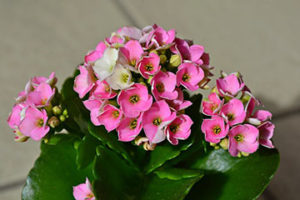
Christmas kalanchoe is also known as ‘Flaming Katy.’ It is a succulent plant that has glossy, dark green leaves with small groups of flowers. The flowers come in many different colors. During the winter, these blooms are exceptionally colorful.
Kalanchoe are non-toxic plants.
Mistletoe
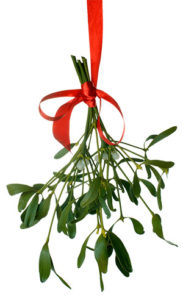
Kissing under the mistletoe has been a tradition for thousands of years. Mistletoe grows on trees and shrubs from which they take nutrients. As a result, it is considered a parasite. It blossoms in the cold wintertime.
American mistletoe is often sold with plastic berries, making it a choking hazard. European mistletoe has real berries. Eating the real berries or large amounts of leaves of either type can cause low blood pressure, confusion, and drowsiness. Both types of mistletoe also have leaves that can cause a skin rash. Call the poison center if anyone has swallowed the live berries or gets a rash after touching the leaves.
Pinecones
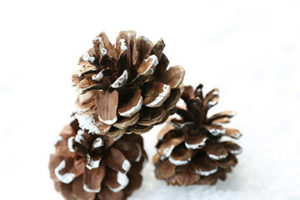
Cinnamon scented pinecones and decor made with pinecones are popular around the holidays. Pinecones come from pine trees, where their main job is to keep the tree’s seeds safe from the weather.
Pinecones are non-toxic.
Poinsettia
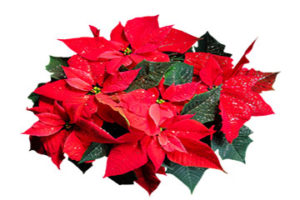
Despite what you might have heard, poinsettias are not poisonous plants. They flower during the winter and are a staple holiday decoration.
Symptoms that occur as a result of eating poinsettia leaves are mild and related to the amount consumed. Nausea and vomiting are possible, but usually only if several leaves are eaten. Pets will experience similar mild symptoms with smaller quantities.
Red Anthurium
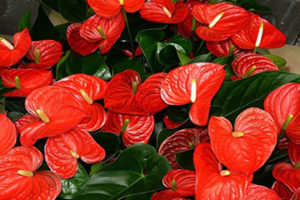
Because of its green leaves and red flowers, the red anthurium is another classic holiday plant. These plants contain a pointy structure in the middle of the flower known as a spadix.
Swallowing any part of this plant can cause mouth and throat irritation. Pets may experience similar effects if swallowed. This plant is similar to a philodendron and is more toxic to cats because it contains calcium oxalate crystals. If the sap gets on someone’s skin or in their eyes, it can cause irritation. Call the poison center if someone swallows this plant or gets a rash after touching it.
For information about other plants, check out our previous Poisonous Plants blog. If you suspect that someone has eaten any plant, remove any remaining plant material from the person’s mouth. Rinse the mouth with water and call the MPC immediately for more instructions. Do not wait for symptoms to call. And, do not make the person vomit. Calling the poison center is free and confidential; our poison experts are here to help 24/7/365. We wish you a safe and happy holiday season.

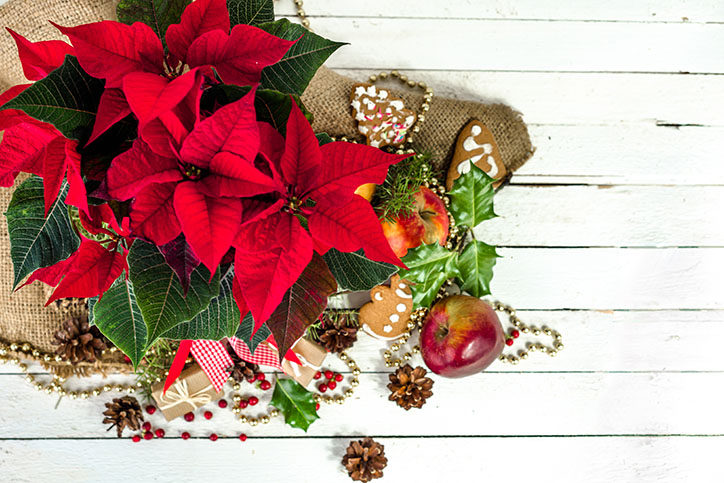



Leave a Reply